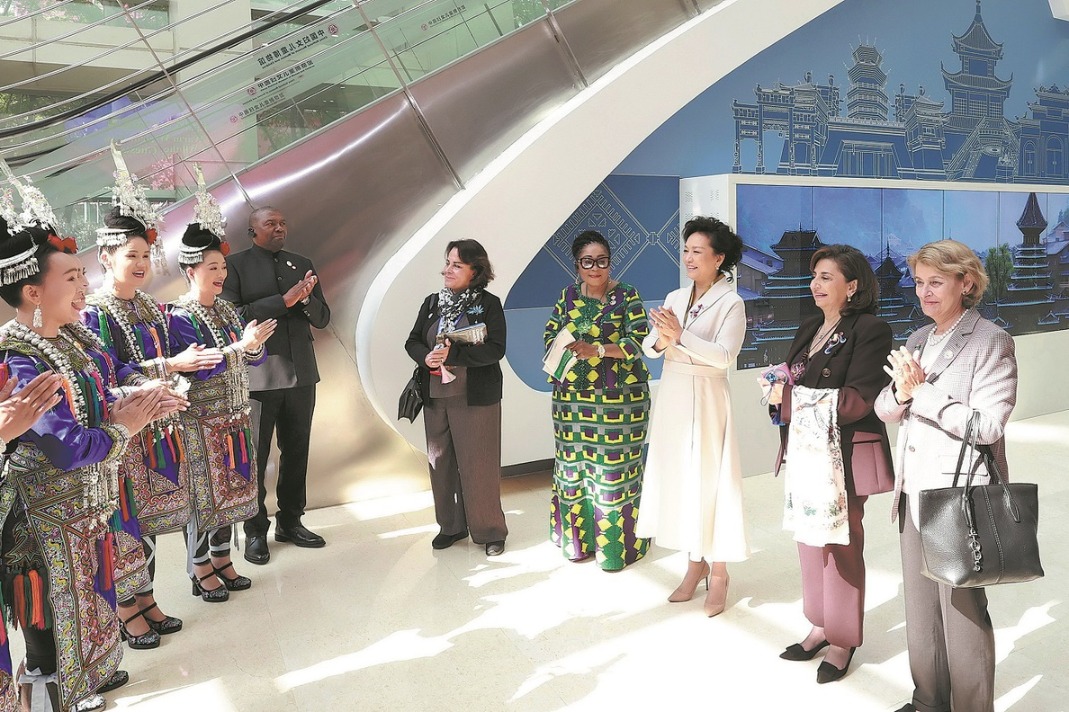China unveils International Lunar Research Station details
Xinhua | Updated: 2024-04-25 16:50
WUHAN -- The International Lunar Research Station will consist of sections on the lunar surface, sections in lunar orbit and sections on Earth, and it will be built in two phases, said Wu Weiren, chief designer of China's lunar exploration program.
Wu, also an academician of the Chinese Academy of Engineering, introduced the ILRS plans while attending the China Space Conference, one of the major events to mark the Space Day of China. The China Space Conference started on Wednesday in Wuhan, capital of central China's Hubei Province.
According to Wu, the first phase of the ILRS construction project will see a basic station built by 2035 in the lunar south pole region. This basic station will have comprehensive scientific facilities with complete basic functions and supporting elements to carry out regular scientific experiments, and develop and utilize resources on a limited scale.
The second phase will see expansion of the station, set for completion by 2045, with a moon-orbiting space station as the hub and facilities featuring complete functions, considerable scale and stable operation. It will carry out comprehensive lunar-based scientific research and resource development and utilization, and conduct technical verification as well as scientific experiments and research for a manned landing on Mars.
Wu said Chang'e 6 will be launched in the near future to carry out sampling on the far side of the moon, which is an important mission ahead of the construction of the basic ILRS.
Chang'e 7 will be launched in 2026 to do environment and resource surveys in the lunar south pole region, while Chang'e 8 will be launched in 2028 to carry out tests aimed at the in-situ utilization of lunar resources.
According to Wu, after completion, the ILRS will consist of the lunar surface section, the lunar orbit section and the Earth surface section, with infrastructure such as an energy power system, a command and information system, and a lunar surface transportation system.
This stage of the ILRS will have energy supply, central control, communication and navigation, Earth-moon roundtrip transport, and lunar surface scientific research functions. It will be capable of carrying out multi-disciplinary and multi-target scientific and technological activities on a large scale over a long period of time, with activities including scientific exploration, resource development and technology verification.
Wu added that China will welcome 50 countries, 500 international research institutions and 5,000 overseas researchers who will join the ILRS program. They will help to develop the station and manage its facilities, and will share in the scientific research results.
The ILRS is a comprehensive scientific experiment facility program initiated by China and jointly developed by multiple countries and organizations.
Latest progress concerning the program was revealed at the launch ceremony of the Space Day of China in Wuhan on Wednesday. New ILRS partners include Nicaragua, the Asia-Pacific Space Cooperation Organization and the Arab Union for Astronomy and Space Sciences.
China will collaborate with these three parties on various issues concerning the ILRS, including its demonstration, engineering implementation, operation and application.
Since 2016, China has celebrated April 24 as the Space Day of China to mark the launch of its first satellite "Dongfanghong 1" into space on April 24, 1970.
























